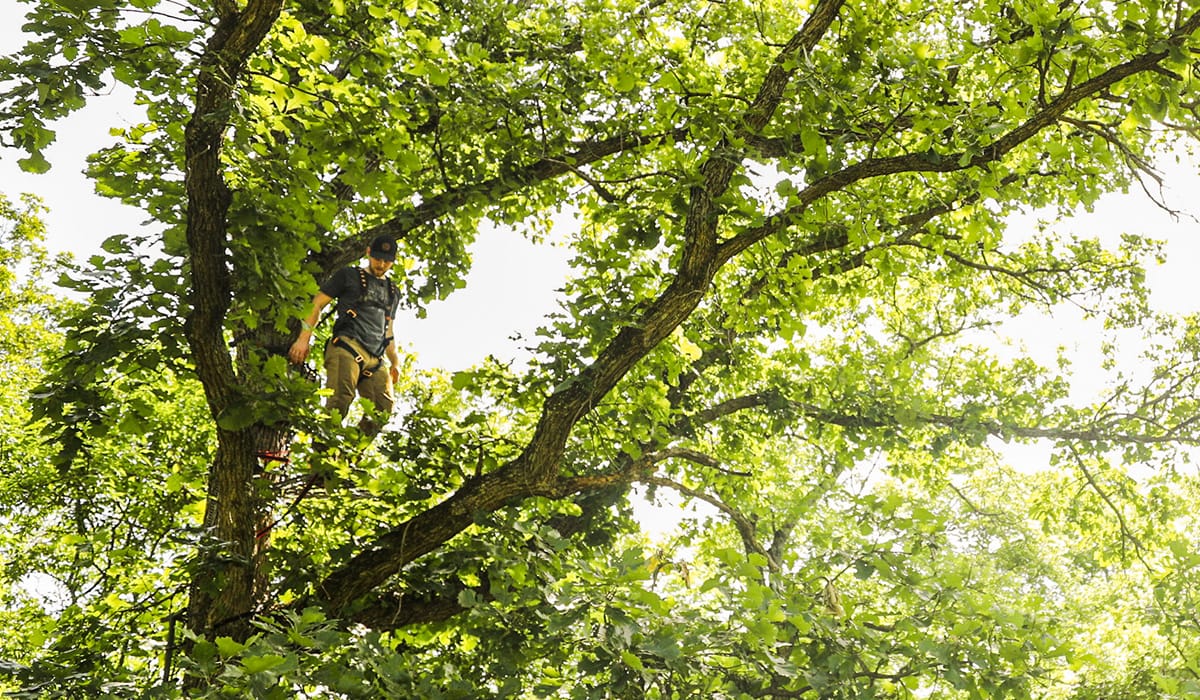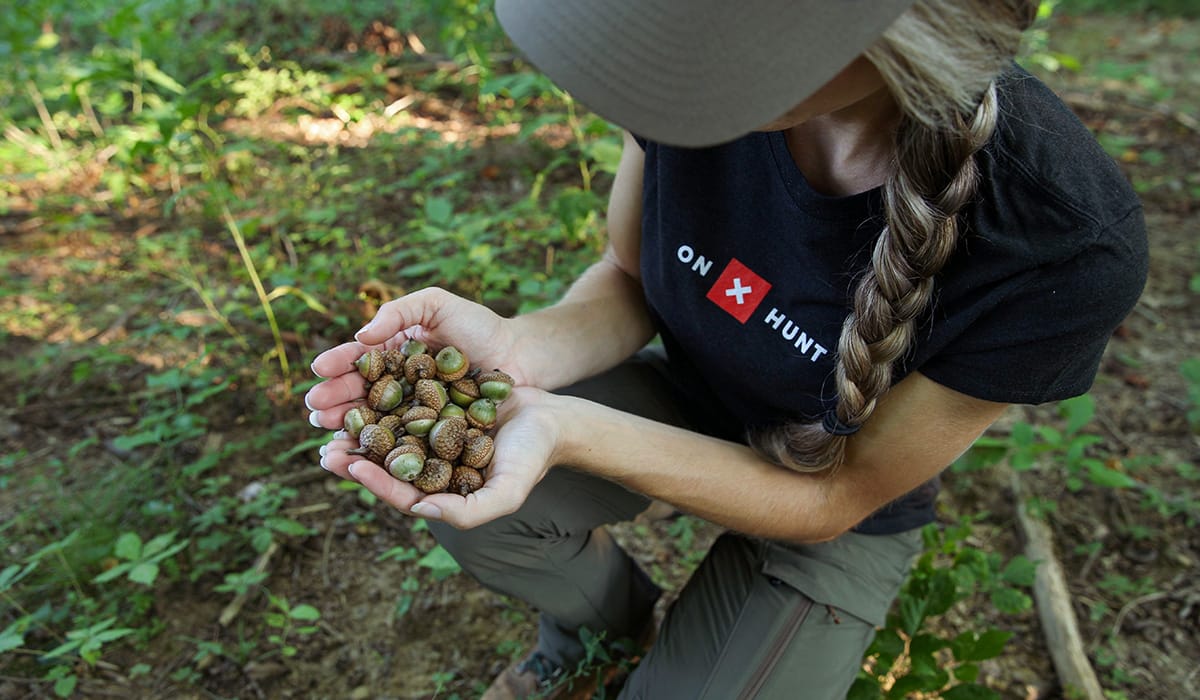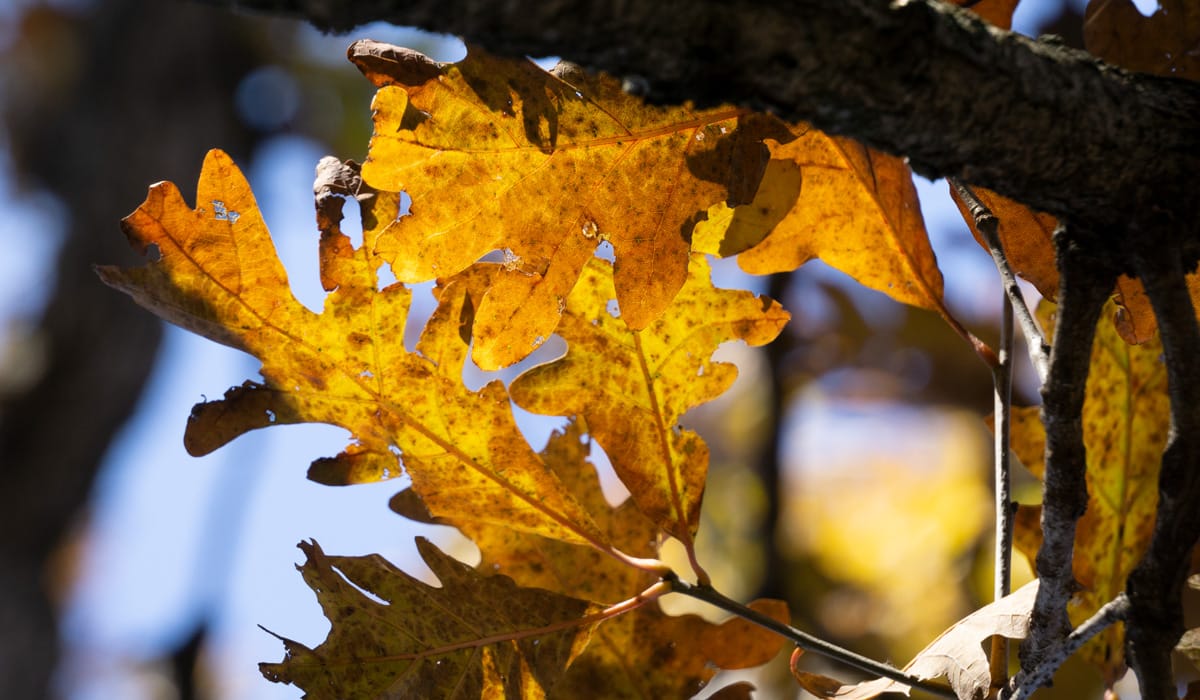The importance of trees on properties managed for whitetail populations cannot be overstated. From providing various food sources to cover, a diverse tree planting strategy will pay dividends on improved whitetail habitat. To help us sort through the best strategies, we discuss tactics with Mossy Oak’s research and development manager for Nativ Nurseries, Dudley Phelps.
Where Do You Start?
“You see it a lot,” says Phelps, “someone’s got a really nice piece of land and they’re happy about it. Maybe it’s their first time being a landowner, and they want to get in there and do everything at once. They end up doing that but then they change their mind.
“I recommend to people that they come up with a five-year plan. Instead of buying all the trees at once and having all that work to do, don’t go buy 100 trees. Instead, buy 20 trees a year for five years so then you have more time to properly maintain them. You can baby them.
“All because you might change your mind. You might be sitting in the deer stand and think, ‘Why did I do that?’ The wind and thermals might be wrong for this. By breaking it into phases you can learn a little bit from your mistakes and you have more time to think about what your next move might be.”

The other starting point is knowing the reason you want to plant trees in the first place. What are your goals? Is it timber production? Trees for turkey roosting? Or are you 100 percent dedicated to having more whitetails on the property? Of course, there’s some overlap among all these strategies, but if you’re talking to Phelps at Nativ Nurseries about getting trees, he’ll ask you this core question.
Planting Trees for Whitetails
“Cover is incredibly important for whitetails,” says Phelps. “They’ve got to have somewhere to hide and not be stressed out so you definitely want to have a lot of that. That may be some kind of perennial native grass, or it might be some kind of early successional cover. Just thick stuff, you know. The guys at the Mississippi State University Deer Lab have always said that if you can throw something like a volleyball 10 to 15 yards in front of you and if you can’t see then that’s a good thing.
“As far a tree species go and producing mast, you want to have something dropping over as long a duration as possible. You want to pick something that is dropping in September when a lot of the vegetation is hard and woody and harder for deer to digest. Then, obviously, as temps get colder and that green vegetation is killed by frost you want lots of acorns, and maybe some fruit, dropping in October, November, and December. You want to have a lot of diversity.
“On that note, you might already have a lot of stuff that’s dropping in October and November, so you want to see what are the lowest holes in your bucket. You might already have all these oak species dropping in October and November so one thing that works well is to plant things you don’t have, like a Nuttall oak, which is good for a lot of folks in the South. It doesn’t really drop any acorns until January and February. My selling point for the particular tree is that when your food plots are eaten to the ground so they look like a putting green, these trees are just starting to drop. Who wouldn’t want that?”

Native or Non-Native?
“There’s varying opinions on this,” says Phelps, “but I personally tend to lean toward sticking with the natives. As a whole, we all have been trying to plant non-natives for a long time and some of them have gotten away from us. So, you know, why take the risk?
“Sure, you might have a non-native oak that’s really good at producing, but that’s all it’s good at. Insects are becoming increasingly important, and people are realizing how important they are to wildlife, and insects prefer native plants. They don’t recognize a non-native plant. They haven’t evolved to eat the particular leaf off that non-native plants that’s necessary for them to make babies. That’s really important too. And we see that even more when you’re planting for birds, like quail and turkeys, which rely on eating a lot of insects. So if you’re planting a lot of non-natives that might be good for providing a lot of food for certain times of the year but it’s not really good for the whole ecosystem.”

Ready to deep dive into tree planting on your property and need more guidance? The Nativ Nursery YouTube channel is the place to start. Check it out here.
What Trees Are in Your Area?
Curious about the types of trees already in your area or that are on your property? The new Tree Species Data Layer in onX Hunt is the place to start. It will help you identify forest compositions in all the lower 48 states. You can even hone in to see tree data for a single 30 yard x 30 yard area.